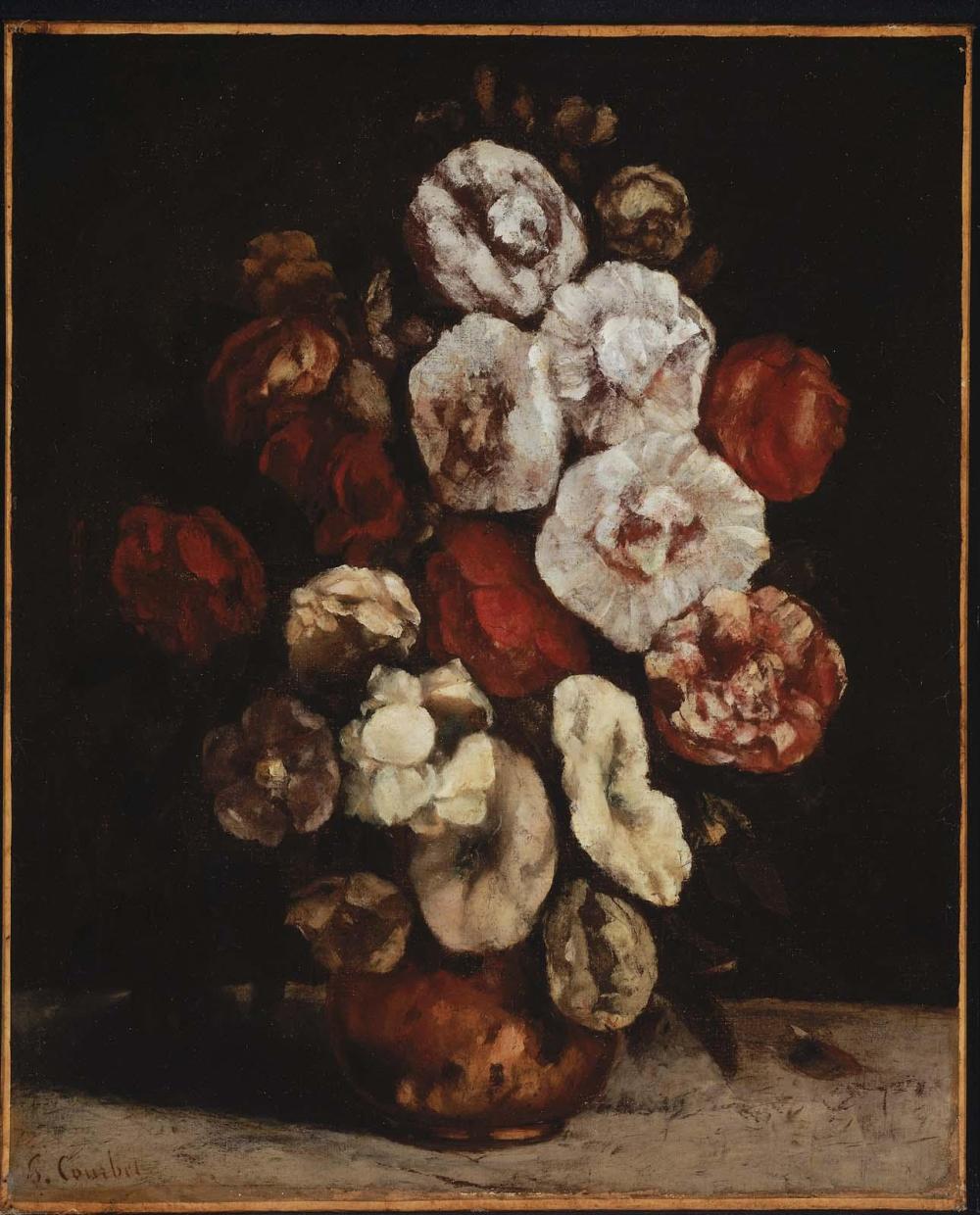Advanced Search 

Hollyhocks in a Copper Bowl
Gustave Courbet (French, 1819–1877)
1872
Medium/Technique
Oil on canvas
Dimensions
60 x 48.9 cm (23 5/8 x 19 1/4 in.)
Credit Line
Bequest of John T. Spaulding
Accession Number48.530
CollectionsEurope
ClassificationsPaintings
Gustave Courbet returned to still-life painting in 1871 while serving a six-month prison sentence for aiding in the destruction of the Vendôme Column during the Paris Commune. After his requests for live models and access to the prison roof for landscape views were denied, he had his sister bring fruit and flowers to his cell. Hollyhocks in a Copper Bowl was likely painted after the artist had been transferred from the prison to a sanatorium because of his failing health. Such late still lifes are humbler than his earlier work in the genre. Placed against a dark background, the floral arrangement in Hollyhocks in a Copper Bowl exists almost entirely in shadow. The ethereal appearance of the white hollyhocks, painted quickly in short, broad brushstrokes gives the still life a melancholic tone. Courbet’s late still lifes arguably record his internal struggle to center himself in his art after great disappointment and public disgrace. The more somber tone of his works after his imprisonment may also reflect his savvy awareness of how his personal scandal could be used to sell paintings.
InscriptionsLower left: 72 / G. Courbet
Provenance1872, probably M. Reinach, Paris [see note 1]. Galerie Bernheim-Jeune, Paris. Galerie Levesque, Paris. By 1914, Charles Pearson, Paris [see note 2]; October 18, 1927, Pearson sale, Cassirer and Helbing, Berlin, lot 15, sold for 23,600 M. 1928, Galerie Thannhauser, Lucerne; July 30, 1928, sold by Thannhauser to John Taylor Spaulding (b. 1870 - d. 1948), Boston; 1948, bequest of John Taylor Spaulding to the MFA. (Accession Date: June 3, 1948)
NOTES:
[1] Mr. Reinach was a friend of the artist, although his exact identity is not certain. It has been suggested that he was Jacques, Baron de Reinach (b. 1840 - d. 1892), a Frankfurt-born financier in Paris; or that he was the father of Joseph (b. 1856) and Salomon (b. 1858) Reinach, a writer and art historian respectively. See Petra ten-Doesschate Chu, Letters of Gustave Courbet (Chicago and London, 1992), pp. 178, 657. This has been identified as one of the paintings Courbet painted for Reinach while in captivity in 1872. For further information, see Robert Fernier, La vie et l'oeuvre de Gustave Courbet: catalogue raisonné (Paris, 1977), vol. 2, p. 142, cat. no. 801.
[2] He lent this to the exhibition "Fransk Malerkunst," Dansk Kunstmuseums Forening, Copenhagen, May 15-June 30, 1914, cat. no. 45.
NOTES:
[1] Mr. Reinach was a friend of the artist, although his exact identity is not certain. It has been suggested that he was Jacques, Baron de Reinach (b. 1840 - d. 1892), a Frankfurt-born financier in Paris; or that he was the father of Joseph (b. 1856) and Salomon (b. 1858) Reinach, a writer and art historian respectively. See Petra ten-Doesschate Chu, Letters of Gustave Courbet (Chicago and London, 1992), pp. 178, 657. This has been identified as one of the paintings Courbet painted for Reinach while in captivity in 1872. For further information, see Robert Fernier, La vie et l'oeuvre de Gustave Courbet: catalogue raisonné (Paris, 1977), vol. 2, p. 142, cat. no. 801.
[2] He lent this to the exhibition "Fransk Malerkunst," Dansk Kunstmuseums Forening, Copenhagen, May 15-June 30, 1914, cat. no. 45.
